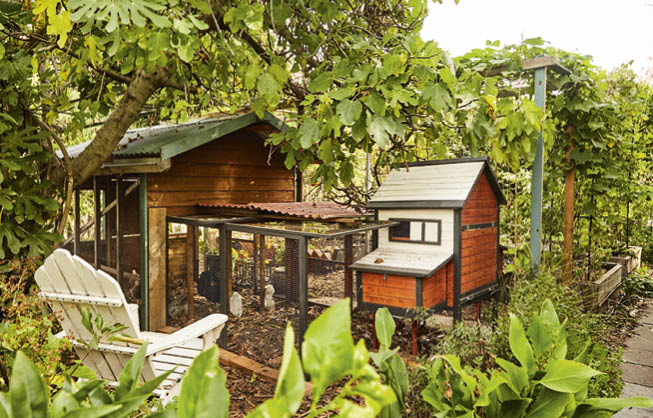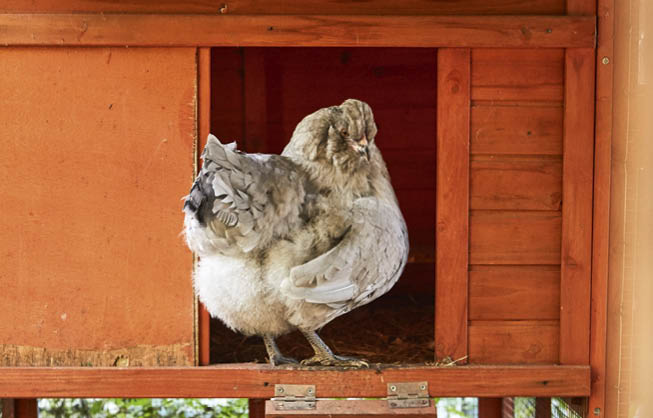Choosing a chook house
2021-06-23T04:51:50+10:00
Life is much richer in this Melbourne household with a few chooks added to the mix – here's some tips to help make a home for chickens so everyone is happy.
We have three chickens in the suburbs of Melbourne. The long lockdown allowed us to finish building our chicken coop, and bring chickens into our family life. Here’s some things to think about if you want to do the same.
Choosing a home
Chicken coops are as varied as there are people – limited only by your imagination. Most councils have some requirements around the size and location of coops, so it would be wise to check with them before embarking.
Our coop and run is situated in the middle of our garden – while unconventional, it actually makes for a wonderful 360-degree viewing angle of our girls. Not shaded by any fences, it has the added benefit of allowing winter sunshine in to warm the hens, and this encourages earlier laying.
While you can buy a pre-made coop and run, it is more exciting to build your own. There are many plans shared online by proud coop owners, from chicken mansions, to more modest enclosures, which you can use as the blueprint for your inspiration.
But for those with limited time and skills, a quality shop-bought coop may be a good starting point.
Being two quite unhandy people with a desire to build our own coop, we went for a halfway house. We salvaged a children’s cubby, and also found someone giving away a small coop. With a few simple modifications, we combined them to create the ideal secure coop and run for our space.

Making chooks comfy
Building shade into your coop/run at the outset is also vital. Chickens suffer heat stress in our scorching summers. Using plants (nature’s shade) makes a lot of sense as they can provide heavy shade in summer, while letting in winter light. On the western side of our run, which gets relentless afternoon sun in summer, we have built a pergola with leftover wood from the cubby. On this, we have trained a vigorous figleaf gourd that provides the run with abundant summer shade, while letting in winter light as it drops its leaves. Other useful shade plants to have around the coop include grapevine, choko and deciduous fruit trees.
A deep-litter system in your chicken run (that is, dry, carbon-rich materials to a depth of at least 5cm) will create a self-cleaning coop that will keep odours at bay. As an added bonus, this will eventually decompose into delicious compost you can add to your vegie patch. In our chicken run, we use locally sourced wood chips and also scatter in autumn leaves as the basis of our deep-litter system.
For the coop, where your girls sleep overnight, look for materials that are dry and soft that will absorb droppings and cushion freshly laid eggs. Pea straw works great, or for a free option, untreated sawdust or coffee husks (not grounds) are a clean and comfortable bedding for your girls.
This article was first published in our Winter 2021 issue (OG 126). There’s a selection of back issues available here — you can also subscribe to the magazine and get the latest issues delivered to your door!






